Rather than depending on the physical Windows 10 keyboard, you can also use the on-screen keyboard to type and enter data. This on-screen keyboard represents a virtual keyboard on your Windows 10 screen, along with all the standard keys. A group of keys, single key or any pointing device such as a mouse can be used to cycle through the keys over the screen. In case you are unsure about to how to launch or use the online keyboard, there is nothing to worry about at all.
In this article, we are going to explain you how to turn on and use keyboard commands for Windows 10 on-screen keyboard.
Part 1. How to Turn on On-Screen Keyboard on Windows 10
There are more than 5 ways for turning on Windows 10 virtual keyboard. We are going to elaborate the detailed process to manage the virtual keyboard. Keep reading to know more!
- Show keys to make it easier to move around the screen - if you wish to light up the keys while typing, activate it.
- Use click sound - in case you want to hear a sound while typing, enable this.
- Turn on numeric keypad - activate this option for expanding the "OSK" to display a numeric keypad.
- Click on keys - this option is for entering text through the on-screen keys by tapping or clicking them.
- Hover over keys - using a mouse or joystick, you can point to a key and the character gets auto-entered by pointing for a specific time.
- Use text prediction - it allows "OSK" for suggesting words for you, so that there is no need to type the entire word.
- Scan through keys - it will let the "OSK" continuously scan the keyboard. It highlights areas that allow typing keyboard characters through a keyboard shortcut, using a mouse click simulating device or a switch input device.
Turning on the on-screen keyboard in "Ease of Access Center"
For activating the virtual Windows 10 keyboard, you need to open the "Ease of Access Center" first. Hit "Windows" + "U" keys together to launch "Ease of Access Center" and then select "Start On-Screen Keyboard".

Launch on-screen keyboard through "PC settings"
You can activate on-screen keyboard using "PC Settings" as well, by following -
Go to "PC Settings" and then "Ease of Access" settings.
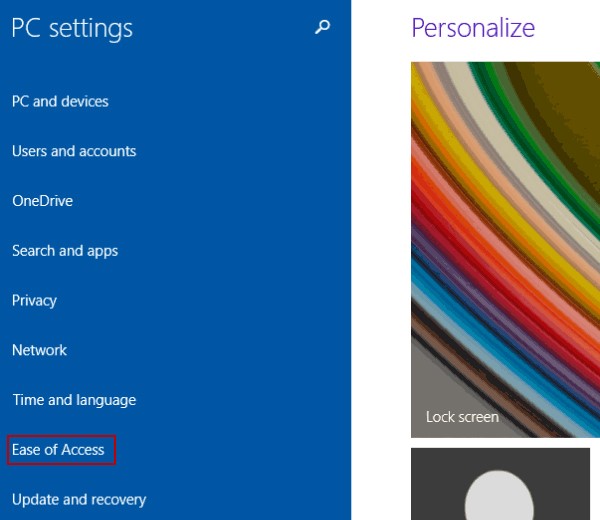
Pick "Keyboard" followed by tapping the switch under "On-Screen Keyboard" and turn it on.
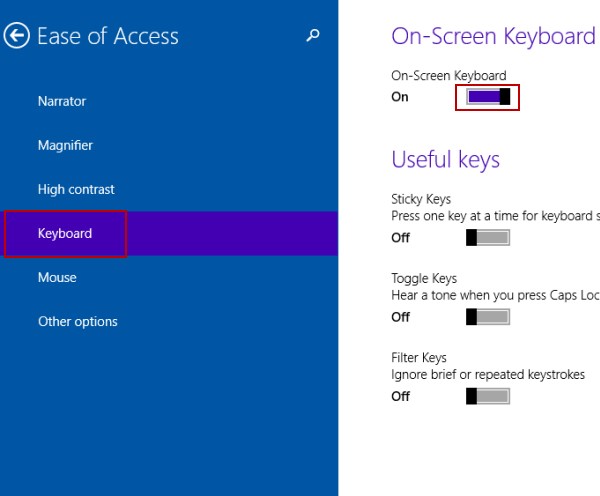
Launch keyboard using "Search Panel"
Hit the "Windows" + "C" command key on Windows keyboard simultaneously and go to the "Charms" menu. Pick "Search" here.
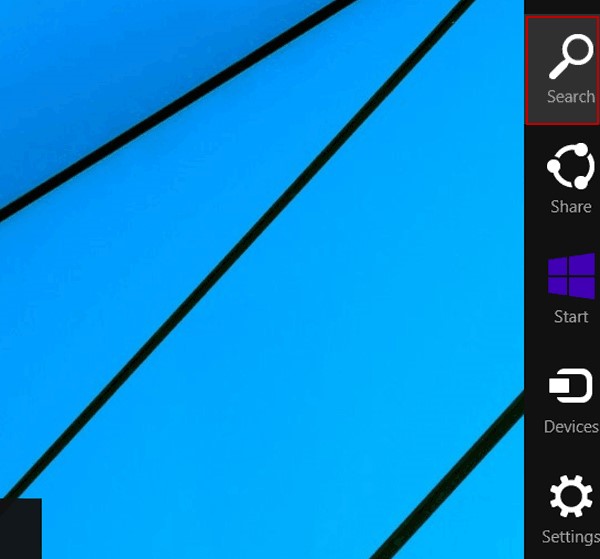
Type "on screen keyboard" within the box then click the "On-Screen Keyboard" from the results.
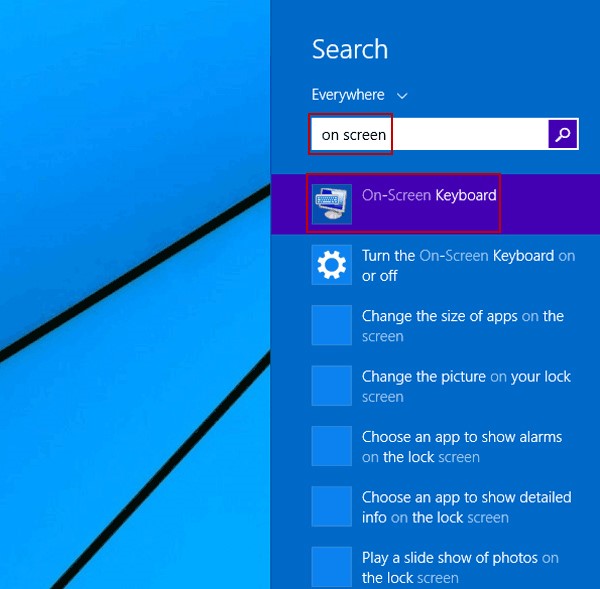
Turn on virtual keyboard with "Command Prompt"
Press the "Windows" + "X" key together for launching "Quick Access Menu" and pick "Command Prompt".
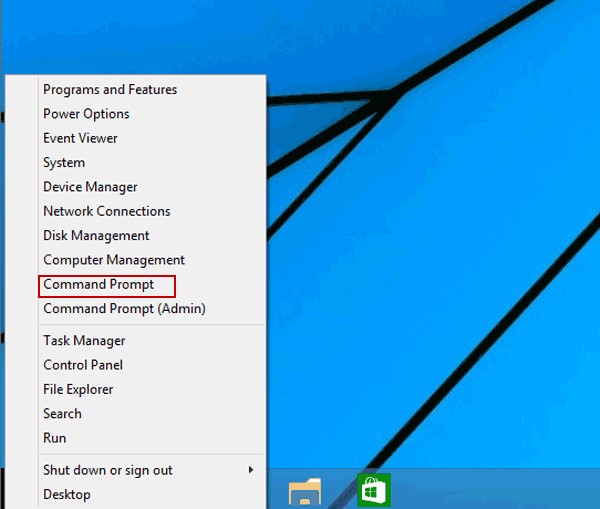
Type "osk" for the command prompt and then hit "Enter".
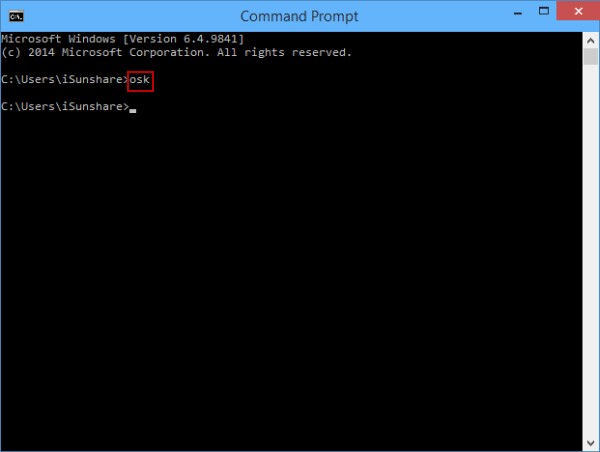
Turn on virtual keyboard with "Run"
Select "Run" from the "Quick Access Menu" by right-clicking the bottom-lower corner.
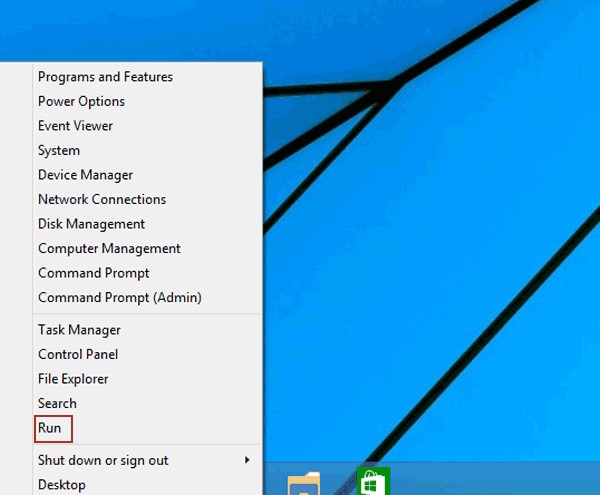
Key in "osk" followed by "OK" within the "Run" dialog box.

Part 2. How to Use On-Screen Keyboard on Windows 10
You can use the screen keyboard command on Windows 10 using the default settings of Windows 10. The built-in Ease of Access tool or On-Screen Keyboard (OSK) can ditch the physical keyboard on your Windows system. There is no need to have a touchscreen to access a OSK, rather the visual keyboard can be used with mouse or other pointing devices or a single physical key or group of keys for shuffling through the onscreen keys. For a touchscreen PC, the touch keyboard appears if you tap the text box while the PC is in tablet mode.
How to launch On-Screen keyboard
Visit "Start" > "Settings" > "Ease of Access" > "Keyboard" > toggle on "Use the On-Screen Keyboard". The keyboard is movable across the screen and stays there until you close it.
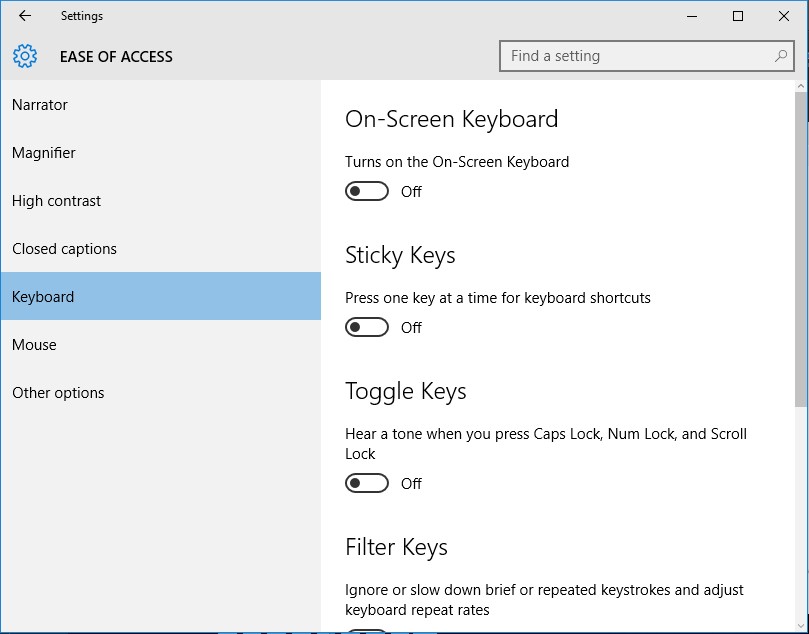
From the sign-in screen, you can also open it:
Hit "Ease of Access" button on the bottom-left corner of the screen and pick "On-Screen Keyboard".
Alter the way to enter information into the On-Screen keyboard
Launch the "On Screen Keyboard" on your computer and then tap "Options".

Now, select your desired options:

Conclusion
Well, now that's all about turning on the on-screen keyboard for Windows 10 computer. But, what if you have forgotten the Windows 10 system password? Without the administrator password, how could you login to your system and use command on Windows keyboard for accessing the virtual keyboard. In such a situation, PassFab 4WinKey will come into rescue. This software can not only recover your lost password, but also helps you reset, remove, create or change the Windows password. The local and domain password for a Windows system can also be recovered using this amazing tool.
